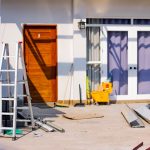Homeowners can face a nightmare with foundation problems, which can lead to costly repairs if they are not addressed promptly. Regularly inspecting your foundation and taking preventive measures can save significant time and money. Understanding the essential tips for foundation repair can help you safeguard your home and maintain its value.
Water is a common culprit in foundation damage. Ensuring proper drainage around your house can prevent water from pooling and causing soil erosion or instability. Maintaining your gutters and installing a sump pump are effective strategies for keeping water away from your foundation.
Another critical aspect of foundation maintenance is promptly addressing cracks and other structural issues. Techniques like epoxy injection and pressure grouting can restore your foundation’s integrity. Regularly checking your home’s foundation for any signs of trouble can help you catch problems early before they become severe. Consulting with a professional such as Burke foundation repair can provide valuable insight into maintaining your home’s structural integrity.
Understanding the Importance of Foundation Repair
Foundation repair is critical for maintaining the safety and value of a home. Left unchecked, foundation issues can lead to severe structural damage and costly repairs.
Maintaining Structural Integrity
The foundation is the base on which the entire home stands. A strong foundation ensures that walls, floors, and roof stay aligned and stable.
When the foundation is compromised, it can cause walls to crack, floors to become uneven, and doors and windows to stick. Regular inspections can catch problems early before they turn into major repairs. Repairing foundation issues promptly helps avoid further damage to the overall structure of the home.
Homeowners should pay attention to signs like cracks in walls, gaps around windows, and uneven flooring. Addressing these issues can prevent serious complications that would otherwise be expensive to fix.
Common Issues from Damaged Foundations
A damaged foundation can lead to several common problems.
Firstly, cracks in walls and floors are often the most noticeable signs of foundation trouble. These cracks can allow moisture to enter, leading to mold and mildew growth.
Uneven floors are another common issue. They can create tripping hazards and indicate that the foundation has shifted.
Doors and windows that don’t close properly also signal foundation movement. This misalignment can further stress the frames and lead to more extensive damage.
Plumbing issues, like broken pipes, can arise from foundation shifts. Fixing these can be costly and disruptive.
Addressing foundation repair early helps maintain the home’s structural integrity and avoids long-term costly repairs.
Signs Your Home Needs Foundation Repair
Issues with your home’s foundation can lead to significant problems if not addressed promptly. Recognizing these signs early can prevent costly repairs and further damage.
Indicators of Foundation Problems
Pay attention to visible cracks in walls and floors. These cracks can be horizontal, vertical, or even zigzag patterns.
Uneven or sloping floors are another sign. If you notice that objects roll across the floor or there’s a noticeable slope, it could signal foundation issues.
Doors and windows that stick or don’t open easily can indicate a shifting foundation. When the base of your home moves, it can warp the frames of doors and windows, making them difficult to operate.
Gaps around frames are also a clue. If you see spaces around the exterior door or window frames, it might suggest that the foundation is settling unevenly.
Severe Signs of Damage
Large cracks in the foundation itself are a severe red flag. These large cracks often indicate substantial movement and should be inspected by a professional immediately.
Bowed walls inside your home can signal serious structural trouble. If your interior walls are bending inward, it’s crucial to have your foundation assessed without delay.
Chimney pulling away from the house can also be a sign of severe foundation problems. A tilting or separating chimney suggests that the foundation beneath it is moving or sinking.
Persistent water issues in the basement can indicate that your foundation isn’t properly sealed or is shifting, allowing water to seep in. This can lead to mold growth and further structural damage.
Recognizing these severe signs is essential for maintaining the structural integrity of your home, and prompt action can save time and money in the long run.
The Foundation Repair Process
Addressing foundation issues is vital for maintaining a home’s stability and safety. The repair process involves several steps, from identifying the problem to choosing the appropriate method to fix it.
Steps in the Foundation Repair Process
Step 1: Initial Assessment
Foundation repair begins with an initial assessment. Homeowners may notice cracks in walls, uneven floors, or doors that don’t close properly. Contacting a reputable foundation repair professional is crucial at this stage.
Step 2: Detailed Inspection
A professional inspector will conduct a detailed examination of the foundation. This includes checking for visible cracks, measuring unevenness, and considering the soil condition around the home.
Step 3: Diagnosis and Planning
After inspection, the problem is diagnosed. A repair plan is created based on the type and severity of the damage. This plan considers factors like the size of the home, soil conditions, and weather patterns.
Step 4: Implementation
The actual repair work begins. This may involve different methods such as slab jacking, pier installation, or sealing cracks. The choice depends on the specific issues identified.
Step 5: Monitoring and Maintenance
After repairs, monitoring ensures the foundation remains stable. Regular maintenance checks help prevent future issues. Homeowners should stay vigilant for any new signs of foundation problems.
Different Foundation Repair Methods
Helical Piers
Helical piers are steel shafts with helical plates. They are screwed into the ground beneath the foundation. These piers transfer the weight of the home to stable soil or bedrock, providing support.
Push Piers
Push piers are driven deep into the ground until they reach stable soil. Hydraulic jacks then lift the foundation, stabilizing the structure. This method is useful for homes with significant settlement issues.
Slab Jacking
Slab jacking involves injecting a grout mixture beneath a sunken slab to lift it back into place. Holes are drilled into the foundation, and the grout is pumped in to fill voids, leveling the foundation efficiently.
Crack Repair
Crack repair addresses visible cracks. Epoxy or polyurethane injections fill these cracks, preventing water infiltration and further damage. This method is often used for minor foundation issues.
By understanding these methods, homeowners can make informed decisions about foundation repairs.
Preventative Measures to Protect Your Foundation
To protect your home’s foundation, it’s crucial to regularly inspect it and take steps to manage water flow around your property. Here are key preventative measures you can take.
Preventing Foundation Damage
Regular inspections are vital. Homeowners should look for cracks, uneven floors, and doors that don’t shut properly. These can be early signs of foundation issues.
Water Management: Ensure that gutters and downspouts are clean. This allows water to flow away from the foundation. Install downspout extensions if necessary.
Proper Drainage: The soil around the foundation should slope away from the house. This helps prevent water from pooling near the foundation.
Plants and Landscaping: Keep shrubs and trees planted at a reasonable distance from the foundation. Roots can interfere with the soil and cause shifting.
Maintaining a Healthy Foundation
Maintain a stable moisture level around your foundation to avoid issues caused by soil contraction and expansion.
Soaker Hoses: Using soaker hoses during dry periods can help maintain consistent soil moisture. Place them a foot away from the foundation and water slowly.
Sprinkler Systems: Inspect and adjust automatic sprinklers to ensure they do not over-water the foundation area. Overwatering can lead to soil erosion and foundation settlement. You may want to get in touch with a sprinkler repair Tampa company to thoroughly check your sprinklers.
Plumbing Inspections: Regularly check plumbing, especially in the basement and crawl spaces, for leaks. Repair any issues promptly to prevent water infiltration.
Sump Pumps: If you live in an area prone to heavy rain, consider installing a sump pump in the basement. This can help redirect excess water away from your home’s foundation.
Routine maintenance and inspections are essential to protect and ensure the longevity of your home’s foundation.
Frequently Asked Questions
This section addresses common concerns many homeowners face regarding foundation repair. It covers warning signs, preventative measures, and tips for managing costs.
What are the warning signs that indicate the need for foundation repair?
Homeowners should look out for cracks in walls, floors, or ceilings. Doors and windows that stick or do not close properly can also signal foundation problems. Uneven floors and gaps between walls and ceilings are other red flags.
What preventative measures can homeowners take to maintain their foundation’s integrity?
Regular inspections are crucial. Homeowners should ensure proper drainage around the foundation by cleaning gutters and installing downspouts. It is also important to maintain consistent soil moisture levels around the foundation to prevent shifting.
How can homeowners assess the severity of concrete slab foundation issues?
Minor cracks may be common and not always a cause for alarm. However, if cracks widen over time or if there are multiple cracks, it may indicate a serious issue. Consulting a professional can provide a thorough assessment and necessary recommendations.
What factors should be considered when choosing a foundation repair method?
Homeowners need to consider the type of foundation, the extent of the damage, and the cost involved. Solutions like epoxy injections are suitable for minor cracks while underpinning or piering might be needed for severe issues.
How should homeowners prepare their property ahead of scheduled foundation repairs?
Clear the area around the foundation by removing any plants, furniture, or other obstacles. Ensure that the work area is accessible to contractors. Verify that utilities are marked to prevent accidental damage during the repair process.
What strategies can homeowners employ to reduce the costs associated with foundation repair?
Get multiple quotes from different contractors to ensure competitive pricing. Address foundation issues early to avoid more costly repairs in the future. Some homeowners might consider financing options or insurance coverage for foundation problems.





